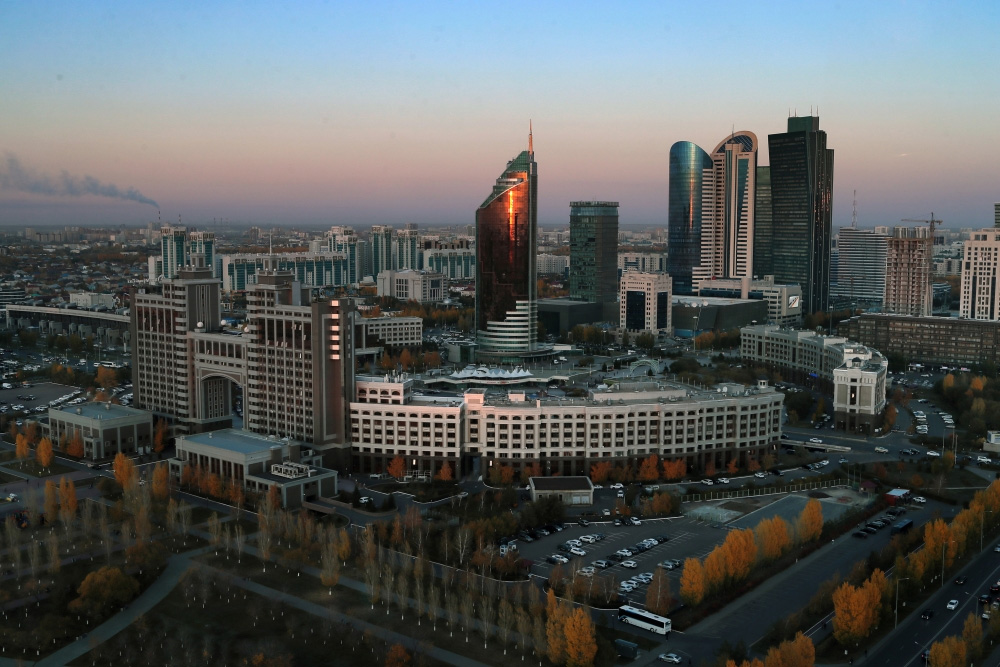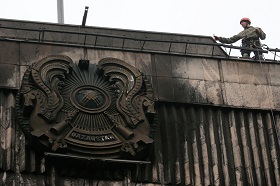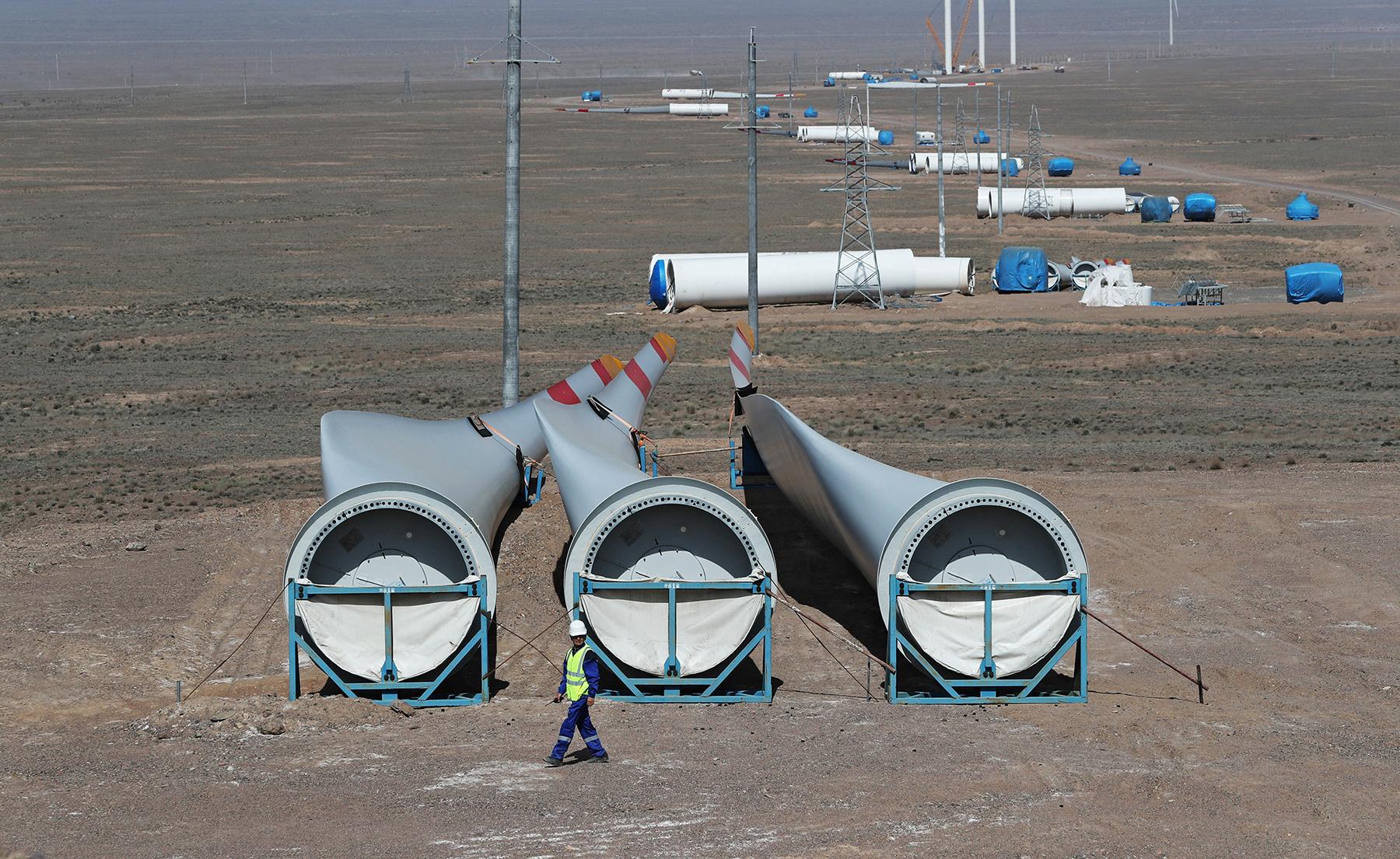The main intrigue of the presidential elections in Kazakhstan in 2022 was the number of votes "against all", since this graph was added to the ballot for the first time since 2004. This was done to measure the mood among that part of the population, who do not support any of the existing political forces, but are capable and ready to impact political processes in Kazakhstan.
Kazakhstan has a difficult and risky path to go through, maneuvering between the interests of the great powers and responding to domestic challenges. The only optimistic conclusion that can be drawn when considering the key social challenges within Kazakhstan is that the fault lines do not run between ethnic groups, although some problems of inter-ethnic relations do exist. These problems are not shared by ethnic groups, but by lifestyles and behaviors that sometimes differ significantly even within the same ethnic group. Perhaps here largely lies the responsibility for the stability of Kazakhstan’s model of inter-ethnic relations and the political system as a whole.
At the same time, the Kazakhstani authorities should not become complacent and think that the threat of political destabilization has passed. A few days before the presidential election, the NSC announced the exposure of another group planning to "seize power in the country." The march of supporters of the scandalous politician and entrepreneur M. Abiyev in the center of Astana, which took place on the day of inauguration of K.-J. Tokayev on November 26, only confirms that it is still not difficult to collect several thousands of tough young people in the center of any city. I am afraid that January 2022 has opened a Pandora’s box in Kazakhstan, which could be the prologue of big and unexpected troubles.
Under these conditions, stable ties with the closest neighbors, Russia and China, will be critical. Therefore, one should not expect Kazakhstan to drift away from Russia in the coming years, especially since the two countries are largely part of a single economic and social body. At the same time, the policy of multi-vectorism is not leaving the agenda, so the Kazakhstani authorities will strengthen their attempts to get rid of what they consider to be excessive dependence on the Russian economy.
On November 20, 2022, Kazakhstan saw an early presidential election. According to the amendments made to the country’s constitution this fall, the head of state is now elected for a period of seven years, not subject to renewal. According to official data from the Central Election Commission of the Republic, turnout was just over 8.3 million people, or 69.44% of the total number of voters. Six candidates competed for the highest post: incumbent president Kassym-Jomart Tokayev, Astana Maslikhat deputy Karakat Abden, representative of the National Social Democratic Party Nurlan Auesbayev, chairman of the Association of Farmers of Kazakhstan Jiguli Dairabaev, economist Meiram Kazhiken and human rights activist Saltanat Tursynbekova.
Since the five candidates competing with the head of state are little-known figures, the outcome of the vote was a foregone conclusion. The presidential election was essentially a referendum of confidence in K.-J. Tokayev in his promotion of political, economic, and social reforms. Still, the weak outcome of the opposition resulted from intra-elite agreements on the need for consolidation to overcome the crisis. Besides, it is an indicator of the opposition’s weakness and a signal that it should go through a path of renewal, much as the entire political system.
The main intrigue of the presidential elections in Kazakhstan in 2022 was the number of votes "against all", since this graph was added to the ballot for the first time since 2004. This was done to measure the mood among that part of the population, who do not support any of the existing political forces, but are capable and ready to impact political processes in Kazakhstan.
Eventually, the incumbent president, Kassym-Jomart Tokayev, predictably won in the first round with 81.31% (almost 6.5 million votes), with 5.8% of the votes "against all", another little over 4% spoiled their ballots, and none of the opposition candidates secured more than 3.5%. This result demonstrates that the population has given the president a vote of confidence and is ready to support him at a difficult time for Kazakhstan.
The inauguration ceremony of a re-elected head of state K.-J. Tokayev was held in Astana on November 26, 2022. The president-elect signed a decree on measures to implement the pre-election program "Fair Kazakhstan is for everyone and for everyone. Now and Forever." One of his first orders was to hold elections "with the establishment of the parliament and maslikhats on the basis of the new electoral system, on party lists and single-member districts, by June 2023.
Economic challenges
Kazakhstan’s fresh president faces a number of external and internal challenges. It is impossible to build the "New Kazakhstan" without a solution to these challenges. It is worth highlighting the two main external difficulties. First, the Ukrainian crisis and the growing anti-Russian sanctions, which presents serious obstacles to foreign trade, logistics, and transit of goods through Russian territory. Destruction of logistics chains, problems with maintenance and insurance of land and sea freight are all troubling for exports from Kazakhstan. It takes time and large financial investments to create and maintain the appropriate infrastructure to change the direction of commodity flows.
Second, almost 80% of Kazakhstan’s exports go outside the former Soviet Union, namely to Europe and Asia. However, the economic growth rates of the EU and China are steadily declining, first in 2020-2021 due to the coronavirus pandemic, then on the back of a sharp increase in the cost of energy in the first half of 2022. This creates significant risks to the sustainable existence of Kazakhstan’s economy. It is obvious that a further expansion of exports from Kazakhstan is impossible. Rather, it will likely decrease in value and physical terms. Therefore, Kazakhstan’s economic model should be reformed, where exports of minerals and the development of the services sector are drivers of economic growth, engaged in the redistribution of imports and financial flows and providing the lion’s share of jobs in the formal and informal sectors of the economy.
Social fragmentation and challenges
Economic reforms will be accompanied by serious internal challenges, the main of which seems to be the rapid fragmentation of the nation’s society, the emergence and growth of rifts in the sphere of language, economic activity, lifestyle and standard of living. First of all, there is a clear split between the regions into a clear north, south, and west. The north of the country, an industrialized region with a multicultural and Europeanized population, suffers from serious environmental problems, emigration, and population decline. The South is an agrarian region whose residents are more inclined to traditionalism and which is characterized by high natural population growth and a large informal economy. But all of the economic growth in southern Kazakhstan is currently eaten up by a growing population, and residents are suffering from a lack of jobs, fertile land, and water resources. The West has been the driving region of Kazakhstan’s economic development over the past 25 years, where oil and gas enterprises are located. This is where tens of thousands of migrants from all over Kazakhstan and neighboring countries have flocked in recent decades, causing serious social tension, job shortages, and political unrest as it was in December 2017 and January 2022. Notably, it is in this region that Islamic fundamentalist groups, which emerged here back in the 2000s and have repeatedly committed criminal offenses and terrorist attacks, are the strongest.
The second major social fault line in Kazakhstan is urban-rural. The standard of living, accessibility of social services and their quality (education, health care) in cities is much higher than even in the surrounding rural areas. Urban areas have a much higher life expectancy and digital accessibility, while rural schools and hospitals lack qualified personnel. According to the results of national and international testing, the gap in the quality of school education received in the city and the countryside is constantly growing. Today, there are thousands of villages in Kazakhstan with a population of over 500 inhabitants without basic amenities such as schools, paramedic services, or roads that can be used to safely reach a town or regional center in case you need help. All this causes dissatisfaction with living conditions and active urban migration of young people. The share of Kazakhstan’s urban population reached 59% in 2021, but most residents of cities, especially the major metropolitan areas of Almaty, Astana, and Shymkent, are first-generation city dwellers who have not yet fully adapted to the new way of life.
Another fault line is gradually forming between the Kazakh- and Russian-speaking parts of the population. Certainly, Kazakhstan can be classified as one of the countries with the highest proportion of residents who speak Russian (more than 80% of the population), while bilingualism is widespread in the country. According to the 2021 Census of Kazakhstan, 80.1% of the population speaks Kazakh, and 49.3% use it in everyday life. In fact, the country’s population is split in two - half speak Kazakh in everyday life, and the other half mostly use Russian. This split does not clearly run along ethnic lines and is not a division between Russians and Kazakhs. It lies between the Kazakh-speaking Kazakhs and the minority group, which, in addition to Russians, includes representatives of other ethnic groups, as well as a large proportion of Kazakhs for whom Russian is the main communication language.
The differences are not so much about the official status of the language, because the problem is much deeper and more complex. Even many ethnic Kazakhs prefer to use Russian in most areas of life. Kazakhs who know only Kazakh are still in the minority, and Russian-speaking or bilingual people predominate, although the situation is gradually changing. Today 70% of schoolchildren in Kazakhstan already study in Kazakh, and 30% in Russian. However, Kazakh-language schools lag far behind in the quality of teaching. This is confirmed by the results of international testing. In fact, the Russian language in modern Kazakhstan is the only way to get a quality education, a well-paid job and a higher social status. The weak position of the Kazakh language, which has the status of the state language, periodically causes heated political discussions and becomes an excuse for provocations.
The gap between the modernized and Europeanized part of Kazakhstani society and those who are more oriented to traditional norms, largely tied to Islam, is deepening. The appeal to traditions is a defensive reaction of part of Kazakhstani society to the great changes that have been taking place in the country in recent years. Traditionalists argue with supporters of modernization about the role of women in society, attitudes toward minorities, and the future of the Kazakh language. Unlike interregional controversies or urban-rural inequalities, the parties to these disputes may live on the same street, in the same entryway, or in the same stairwell.
***
Kazakhstan has a difficult and risky path to go through, maneuvering between the interests of the great powers and responding to domestic challenges. The only optimistic conclusion that can be drawn when considering the key social challenges within Kazakhstan is that the fault lines do not run between ethnic groups, although some problems of inter-ethnic relations do exist. These problems are not shared by ethnic groups, but by lifestyles and behaviors that sometimes differ significantly even within the same ethnic group. Perhaps here largely lies the responsibility for the stability of Kazakhstan’s model of inter-ethnic relations and the political system as a whole.
At the same time, the Kazakhstani authorities should not become complacent and think that the threat of political destabilization has passed. On November 18, 2022, in Astana, a closed trial began for the former chairman of the National Security Committee of the Republic (NSC), K. Masimov, who is on trial for treason over the January events. Despite this, it is confident to say that there are very powerful forces within the country that may try to challenge the authorities and seriously destabilize the situation again. K.-J. Tokayev admits it himself: "Unfortunately, even now they are trying to play this dangerous game. This is just a game for them, in which they only care about their imaginary popularity on social networks and their desire to attract the attention of secret sponsors." The president also added that "ordinary citizens and the interests of the state suffer from this. Therefore, I am sure that such people do not and will not have any political future in Kazakhstan. But it cannot be ruled out that they may become a tool in the hands of various destructive forces trying to destabilize the internal situation."
A few days before the presidential election, the NSC announced the exposure of another group planning to "seize power in the country." The march of supporters of the scandalous politician and entrepreneur M. Abiyev in the center of Astana, which took place on the day of inauguration of K.-J. Tokayev on November 26, only confirms that it is still not difficult to collect several thousands of tough young people in the center of any city. I am afraid that January 2022 has opened a Pandora’s box in Kazakhstan, which could be the prologue of big and unexpected troubles.
Under these conditions, stable ties with the closest neighbors, Russia and China, will be critical. Therefore, one should not expect Kazakhstan to drift away from Russia in the coming years, especially since the two countries are largely part of a single economic and social body. At the same time, the policy of multi-vectorism is not leaving the agenda, so the Kazakhstani authorities will strengthen their attempts to get rid of what they consider to be excessive dependence on the Russian economy.







